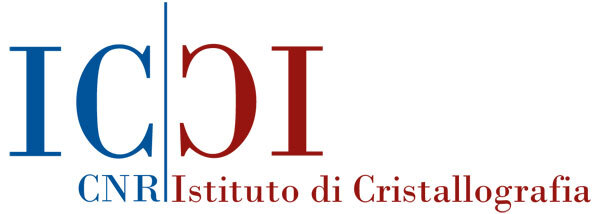Mercoledì del PRIN n.2: Rocco Caliandro & Aurelia Falcicchio – Danilo Belviso & Anna Giovanna Sciancalepore
MENDELEEV – green revolution by Merging mEtal–orgaNic frameworks with Deep Eutectic soLvEnts for the dEVelopment of sustainable technologies and artificial nitrogen fixation
Dr. Rocco Caliandro & Dr. Aurelia Falcicchio
Nowadays, the EU’s sustainable industrial policy explicitly focuses on opportunities for sustainable growth and job creation, fostering at the same time the ecological transition towards major efficiency in the use of resources in industry, and encouraging research on original and innovative solutions for a clean and sustainable advance of energy efficiency, from basic research to market uptake. Ammonia, the second most important chemical in the world, has recently gained much attention as a hydrogen carrier, and is also the strategic starting material for obtaining fertilizers, which are the basis of the current nourishment of the planet’s population. Ammonia production, however, is still almost exclusively based on the old Haber-Bosch process, which accounts for ca. 1.5% of the global CO2 emissions and consumes ca. 2% of the world’s energy production. Catalyzed reactions in volatile organic solvents (VOCs) have also served as important methods for C–C bond formation since their discovery. The release of VOCs into the environment, however, still remains a matter of great concern, and a number of regulations are currently in place to control their production, use, and disposal. MENDELEEV Consortium assembles 3 Teams with complementary expertise, spanning organic, material chemistry, and crystallography. We aim to synergize our expertise in order to set-up radically new foundation of (Photo)Catalytic and Synthetic Chemistry and the green production of ammonia, based on the synergistic use of environmentally friendly media (Deep Eutectic Solvents, DESs) and Metal-Organic Frameworks (MOFs). MENDELEEV will pursue the following objectives and challenges: (a) design, preparation and characterization of novel MOFs using DESs as solvents and structure-directing agents; (b) employment of DESs for metal- and biocatalyzed processes using ad hoc functionalized MOFs with Earth-abundant metals to reshape fundamental cross-coupling reactions with the final aim to prepare key intermediates towards the synthesis of APIs; (c) artificial nitrogen fixation to ammonia using DES-mediated synthesis, MOFs as photocatalysts, and DESs as active reaction media. Extended dissemination and communication activities will be performed in order to both raise the awareness on project issues among the main stakeholders, draw the attention of the industrial world for the large exploitation potential of the project results, and bring the general public more aware of the topics of sustainability and clean chemistry and energy. The development of a unique (photo)catalytic chemistry compatible with nature-inspired solvents using MOFs as privileged catalysts would be of substantial long-term benefit to multinational industries due to the creation of new protocols in the sustainable production of fine chemicals and ammonia with a low ecological footprint, while minimizing chemical hazards and lowering production costs.
Ambito:
Physical Sciences and Engineering / Organic chemistry
Keywords
- Deep Eutectic Solvents
- organic chemistry
- sustainable chemistry
- energy transition
- organometallic chemistry
- structural characterization
_________________________________________________________________________________________________________________________
INtegrated Theoretical and Experimental Study for the development on new generAtion excitonic SOLar cElls (INTESA-SOLE)
Dr. Danilo Belviso & Dr. Anna Giovanna Sciancalepore
The development of cost-efficient solar cells is one of the most important challenges to increase energy production from renewable sources and to fight climate change, two task of outstanding importance, as recognized by the mission M2C2 of the PNRR and in COP26 conference. Organic (OSC) and perovskite (PSC) solar cells are potentially well suited for large-scale commercialization, because of their low-cost, lower sensitivity to environmental conditions, and good performance in low-light conditions, being suitable for sustainable small- and large-scale electronic devices, and energetically self-sufficient buildings. Unfortunately, in OSCs, voltage losses due to non-radiative recombination are much higher than in conventional inorganic solar cells and this greatly hampers their commercialization. Therefore, one of the primary objectives of this research project is the understanding and possibly the removal of non-radiative decay paths in OSCs, a task successfully applied in the past to GaAs solar cells. Herein, with this goal in mind, we plan to integrate theoretical and experimental studies for achieving a comprehensive understanding of the most common decay paths in OSCs, leading to a rational design of new materials with enhanced efficiencies. The integration of different expertise will enable paying the same attention to different facets of the problem: the morphology of the relevant interfaces, their electronic structure at an atomistic level, and the computation of the rates of the elementary processes involved, e.g. charge separation, charge recombination, triplet formation. The latter point is a relevant novelty, which has been largely overlooked in the current literature, mostly focused on energy level alignment rather than rate constant ratios. The impact of triplet formation on the performances is also proved by its inclusion among the main topics of the Samsung Ltd. financing GRO schemes, a fact that points out the commercial impact of the study we propose. As a second significant target, we plan to the synthesize novel non-fullerene acceptors (NFA), characterized by a significant absorption in the NIR zone of the optical spectrum. The new compounds will be tested in devices fabricated using commercial polymeric materials as donor materials, featuring complementary absorption spectrum in order to exploit the whole solar bandwidth in OSC. Theoretical predictions of the efficiency of these materials will be corroborated by experimental fabrication and characterization of the devices. Finally, a PSC exploiting crystals of a photoactive protein as active containers for perovskite will be developed by microfluidic approaches. Such PSC could be fitted in flexible cells because crystals will be supported by Lipidic Cubic Phase and could provide a green alternative to traditional photosensitizer. Perovskite/protein structure and energy transfer mechanisms between these components of PSC will be analyzed by structural and theoretical studies.
Keywords:
- perovskite
- bacteriorhodopsin
- bio-inspired solar cell
- structural biology


